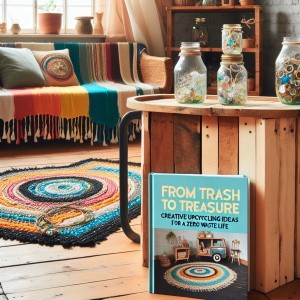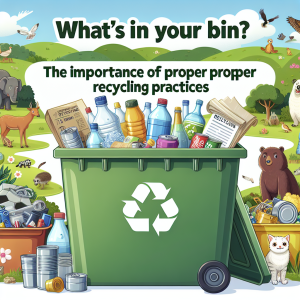The rise of zero-waste products represents a significant shift in consumer behavior as individuals and businesses alike become increasingly conscious of the environmental impact of their purchasing choices. This movement champions a sustainable lifestyle where waste is minimized, and resources are reused, recycled, or composted, ultimately contributing to a circular economy. By embracing zero-waste products, consumers not only reduce their ecological footprint but also often discover a more economical and fulfilling way of living.
Zero-waste products are designed with the environment in mind. This typically involves items that are reusable, refillable, compostable, or made entirely from sustainable materials. For instance, instead of single-use plastic bags, many households now prefer cloth totes that can be used repeatedly. Similarly, items such as stainless steel straws, bamboo toothbrushes, and glass storage containers are increasingly replacing their single-use counterparts, making a significant difference in reducing the amount of waste that ends up in landfills and oceans.
Plastic waste is one of the most significant contributors to environmental degradation, with millions of tons entering marine environments annually. Zero-waste products aim to combat this problem by offering alternatives that either eliminate the need for plastic or utilize biodegradable materials. Brands that adopt sustainable packaging practices further enhance their contribution by ensuring that their product lifecycle is as eco-friendly as possible. Packaging made from recycled materials or designed to be compostable epitomizes the zero-waste ethos by minimizing waste from the production process to disposal.
Moreover, zero-waste living prioritizes the principle of ‘refuse, reduce, reuse, recycle, and rot,’ often referred to as the 5Rs. This framework encourages consumers to refuse unnecessary products and packaging, reduce consumption, reuse materials, recycle where possible, and rot or compost organic waste, ultimately leading to less reliance on landfill sites.
Replacing everyday kitchen and personal care products with zero-waste alternatives is a practical starting point for individuals aspiring to embrace eco-friendly practices. Kitchen staples such as beeswax wraps can replace plastic wrap, while silicone bags offer a reusable substitute for zipper bags. In personal care, shampoo bars, bamboo toilet paper, and reusable makeup pads are becoming staples for eco-conscious consumers keen to reduce their environmental footprint without sacrificing quality.
One of the significant barriers to widespread adoption of zero-waste products is the perception of higher costs. Initially, consumers might find these products more expensive than their mass-produced, single-use counterparts. However, zero-waste products often prove more economical over time due to their durability and reusability. For instance, investing in a high-quality stainless steel water bottle mitigates the need for disposable plastic ones and pays off in both environmental impact and cost. Education and awareness are critical in helping consumers understand the long-term financial and environmental benefits of zero-waste living.
Businesses are also playing a crucial role in the zero-waste movement by integrating sustainable practices into their operations. Many companies are shifting to zero-waste manufacturing processes that minimize waste and utilize eco-friendly materials throughout the production cycle. Retailers are increasingly offering a variety of zero-waste products, often dedicating sections of their stores to sustainable items and even establishing entire zero-waste shops that allow consumers to shop with minimal environmental impact.
The growth of zero-waste products is further supported by technological advancements and innovations fostering new possibilities for sustainable production. Innovations such as plant-based plastics, water-soluble packaging, and advanced recycling processes are transforming how products are manufactured and disposed of, contributing significantly to reducing environmental harm.
The rise of zero-waste products is also closely linked with consumer values around health and wellness. Many individuals prefer products that are free of harmful chemicals, favoring raw, organic, and natural components. Zero-waste products cater to this preference by often being made from non-toxic, biodegradable components, which are gentler on the environment and safer for consumers. Foods stored in glass or stainless steel rather than plastic, for example, avoid potential contamination from harmful plasticizers like BPAs.
Communities around the world are embracing zero-waste living through local initiatives and grassroots movements. Community-led efforts such as swap events, repair cafes, and bulk food cooperatives promote zero-waste living by encouraging resource sharing and waste reduction. These efforts foster communal participation in waste reduction, amplify awareness, and demonstrate the tangible benefits of living sustainably.
Government policies also play an influential role in the rise of zero-waste products, with many regulations emerging globally to promote sustainable practices. Legislative measures targeting single-use plastics, incentives for businesses to adopt greener practices, and government-funded educational campaigns are all contributing to the growing adoption of zero-waste products. Enforcement of such policies further encourages industries to invest in sustainable alternatives, thereby driving innovation and making zero-waste living more accessible and appealing to consumers.
The internet and social media are powerful tools in advancing the zero-waste movement, providing platforms for education, sharing ideas, and building community support. Blogs, vlogs, and dedicated social media groups serve as valuable resources for consumers interested in learning about zero-waste practices and products. Influencers in the sustainability sector often guide their audiences on adopting such lifestyles, inspiring communities worldwide to transition toward more eco-friendly living.
In summary, the rise of zero-waste products is a growing phenomenon driven by environmental awareness, technological innovation, community efforts, and supportive policies. By choosing zero-waste products, individuals contribute to a healthier planet while often discovering personal benefits such as reduced costs and improved well-being, illustrating that living sustainably is both practical and rewarding.


